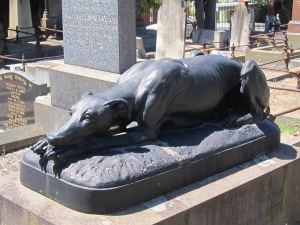1868 (reprinted 1998), 473 p in very small font!
Oooof! That took some reading! Nothing like a big, flapping Victorian novel to gobble up reading time.
The Moonstone by Wilkie Collins has been hailed by some as the first detective story, and it certainly has many of the features of every BBC production you’ve ever seen: the amateur detective, the country house, the incompetent and bumbling police officer, the canny ex-policeman, sleep-walking, creeping round corridors in the night.
The Moonstone is a huge diamond, pillaged on a colonial adventure in India, and brought back ‘home’ to England where it is bequeathed by her uncle to Rachel Verinder on her 18th birthday. That night, after her party, the diamond disappears. Suspicions fall on three mysterious Indian gentlemen who have been seen around the country estate, and when an unnamed object is committed to the care of a banker for one year, it is assumed that it is the Moonstone. Meanwhile there are distraught servant girls, opium addiction, quicksand…it’s got it all, really.
I’m not particularly enamoured of detective stories, but what really impressed me was how modern (or post-modern, really) this book is in its construction. After a brief prologue, detailing events of 1799, it is told in two parts or ‘periods’. The first, set in 1848 is titled ‘The Loss of the Diamond” and consists of one long narrative, ‘The Events, related by Gabriel Betteredge, House Steward in the service of Julia, Lady Verinder”. The section period, “The Discovery of the Truth” is set a year later, and consists of eight separate narratives, contributed as statements, or drawn from letters and journals. There is an epilogue, itself in the form of three statements. It reminded me a little of Tristram Shandy in that Collins deliberately sets the narratives up against each other, parodying the author in some segments, and unsettling your confidence in others. It could have quite easily come from the pen of John Barth (e.g. The Sotweed Factor) a hundred years later.
But, indeed, it was published in 1868 in serial form in Dickens’ magazine All the Year Round, which no doubt contributed to its rather daunting length. We modern readers more accustomed to our books in 300 page bites, and I must admit that I did pick it up each night marveling at the fact that I seemed to have been reading for so long with still so far to go. Still, at least when I got to the end of it, it was perfectly clear just what happened, instead of the rather vague endings in more recent books that leave you wondering whether you really do know who committed the crime after all.
It’s the first book for 2013 with my face-to-face bookgroup, and I’m wondering if others made it to the end. I’m glad that I did, but I think what I took away from it was more a sense of admiration for Wilkie Collins’ writing than a driving need to know who-done-it.



















